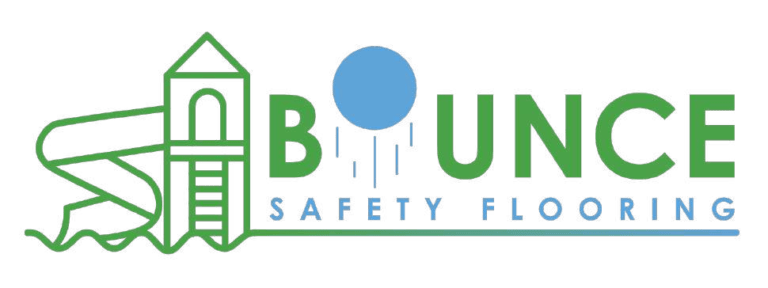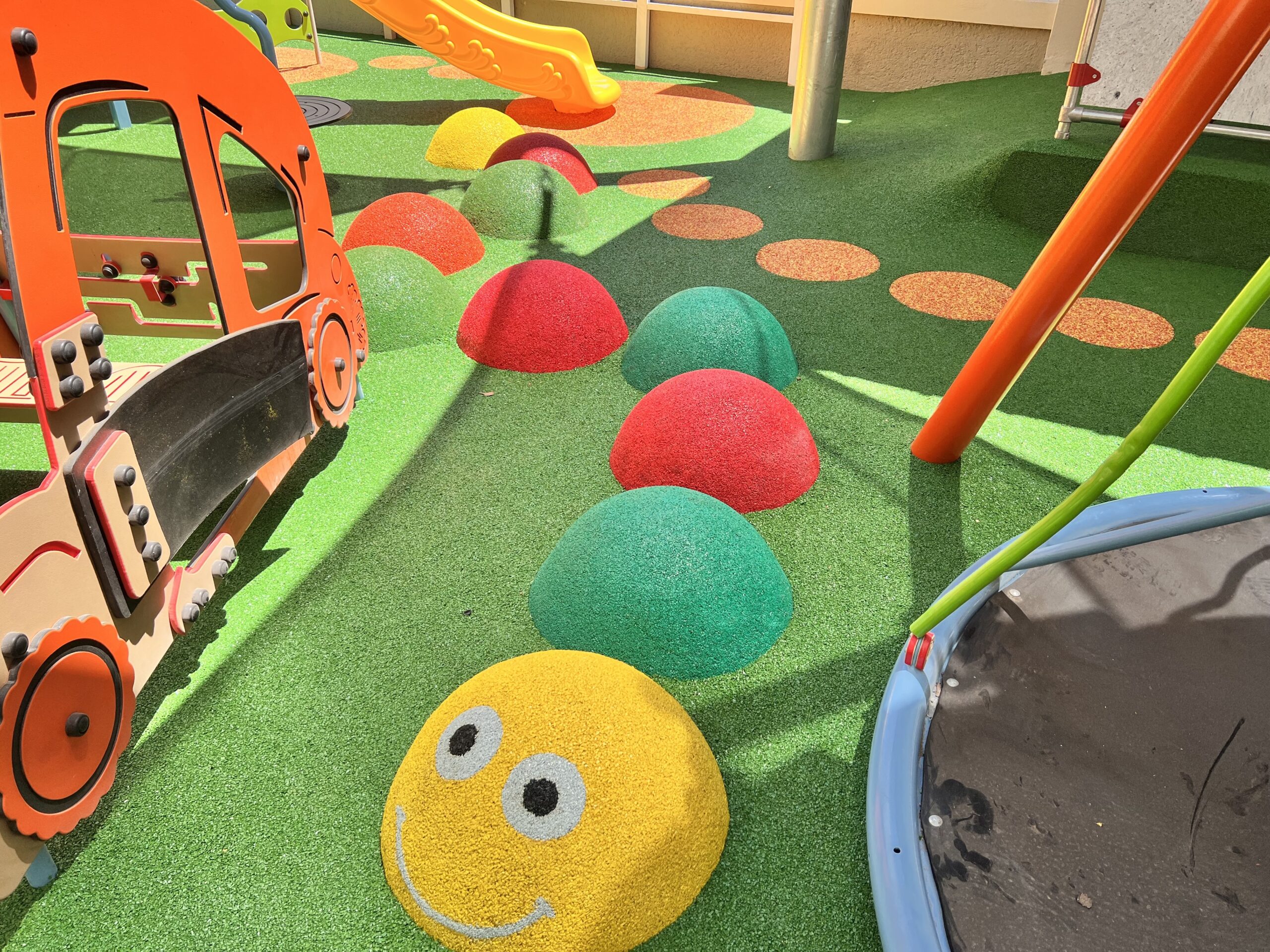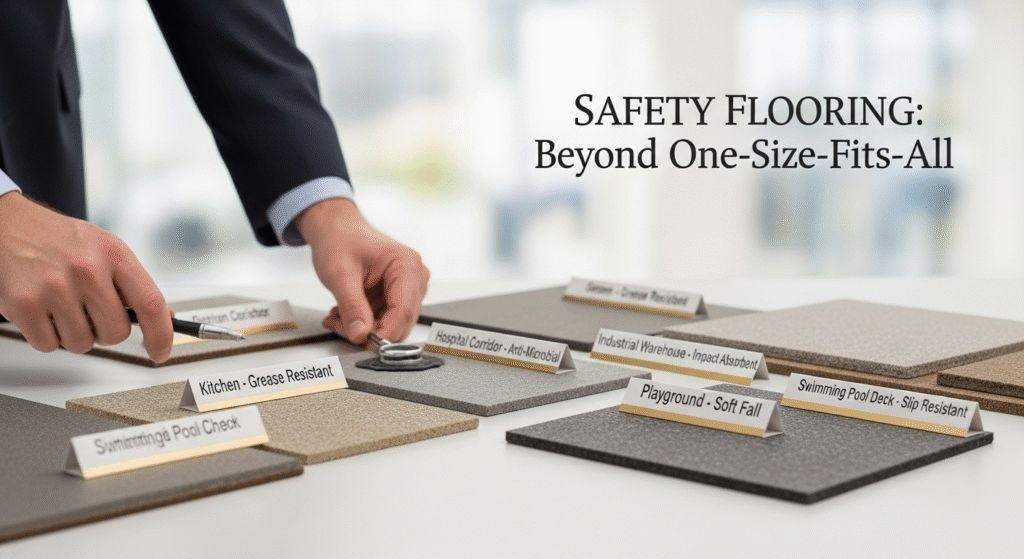This article explores the critical factors to consider when choosing the right safety flooring for a specific area, emphasising that a “one-size-fits-all” approach is insufficient. It delves into the benefits of safety flooring, common application areas (commercial, healthcare, residential), aesthetic options, and a detailed comparison of material types like vinyl, rubber, and epoxy. The piece concludes by highlighting the practicalities of installation, maintenance, and total cost of ownership, guiding commercial property owners, facility managers, and other professionals towards informed decision-making.
When choosing the right safety flooring for a specific area, critical factors include expected traffic levels and type, moisture exposure and slip resistance requirements (R-ratings), hygiene and chemical resistance needs, aesthetic preferences, budget constraints, and long-term maintenance considerations. A careful evaluation of these elements ensures optimal safety, durability, and functionality for any environment.
Friends, colleagues, and fellow architects of safe spaces, let me tell you a story – a familiar one. It starts with a vision for a magnificent commercial kitchen, a bustling school corridor, or even a sleek, modern home bathroom. Everything is perfect in the plans, but then comes the crucial question: what lies beneath our feet? It’s not just about what looks good; it’s about what performs when safety is paramount. The truth is, there’s no “one-size-fits-all” solution when it comes to safety flooring. Each area presents its unique challenges, its own narrative of use, and a distinct set of requirements that demand a thoughtful, informed decision. So, what factors should be considered when choosing the right safety flooring for a specific area? Let’s peel back the layers and uncover the essentials.
What are the main benefits of installing safety flooring in commercial environments?
Imagine a busy restaurant kitchen, sizzling with activity. Or a hospital ward, where every second counts. In such dynamic environments, the benefits of safety flooring extend far beyond mere aesthetics – they’re about safeguarding lives and livelihoods.
Firstly, and most importantly, it’s about accident prevention. Slips, trips, and falls are not just inconvenient; they’re the leading cause of occupational injuries in South Africa, often resulting in significant financial losses, legal repercussions, and, tragically, human suffering. Safety flooring, with its enhanced slip-resistance properties, drastically reduces this risk.
Secondly, durability and longevity come into play. Commercial spaces endure relentless foot traffic, heavy equipment, and constant cleaning. The right safety flooring is engineered to withstand this punishment, ensuring a longer lifespan and reducing the frequency and cost of replacements.
Thirdly, hygiene and easy maintenance are crucial, especially in healthcare and food preparation areas. Many safety flooring options are seamless, non-porous, and resistant to chemicals, making them easy to clean and sanitise, thus preventing the growth of bacteria and mould. This is an essential factor to consider when choosing the right safety flooring for a specific area.
Lastly, let’s not forget acoustic comfort and underfoot comfort. In environments like schools or offices, flooring can contribute to noise reduction, creating a more pleasant atmosphere. Some options also offer a degree of cushioning, reducing fatigue for those on their feet all day.
✅ Key Takeaway: Installing the correct safety flooring isn’t merely a compliance checkbox; it’s a strategic investment in safety, operational efficiency, and long-term cost savings.
Where is safety flooring most commonly required or recommended?
From the bustling corridors of a shopping mall to the quiet intensity of a laboratory, the need for safety flooring manifests in diverse settings. Understanding these application areas is paramount when you consider what factors should be considered when choosing the right safety flooring for a specific area.
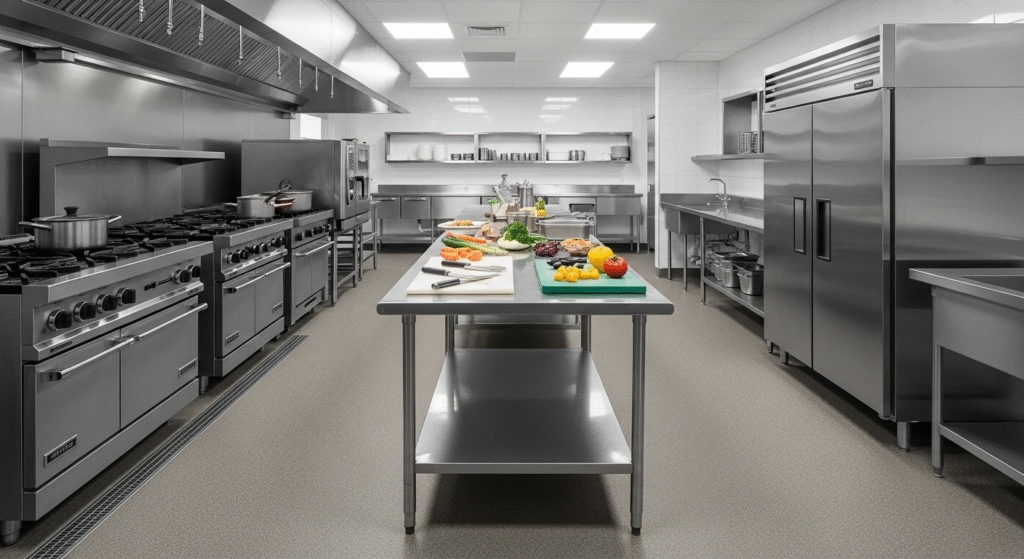
How do specific application areas influence flooring choices?
Different environments present unique challenges, demanding tailored flooring solutions.
- Commercial Kitchens & Food Preparation Areas: These are high-risk zones. Spills of water, grease, and food debris are constant. Here, maximum slip resistance (often R11-R13 ratings), chemical resistance to cleaning agents, and ease of cleaning are non-negotiable. Seamless, impervious surfaces are vital for hygiene.
- Healthcare Facilities (Hospitals, Clinics, Aged Care): Hygiene is paramount. Flooring must be anti-microbial, easy to clean, quiet, and comfortable underfoot. Slip resistance is crucial in patient areas, wet rooms, and busy corridors. The ability to withstand heavy rolling loads (beds, trolleys) and resistance to staining from bodily fluids is also key.
- Schools & Educational Institutions: High traffic, spill resistance, impact absorption, and acoustic properties are important. Safety flooring helps prevent falls in playgrounds, classrooms, and especially bathrooms and changing rooms. Bright colours and engaging designs can also play a role.
- Industrial & Manufacturing Facilities: Durability against heavy machinery, chemical spills, and abrasion is critical. Anti-fatigue properties, static control (ESD flooring), and defined safety zones can also be incorporated.
- Retail & Hospitality: While aesthetics are a major driver here, slip resistance in entranceways (especially in wet weather), service areas, and restrooms cannot be overlooked. Durability to heavy footfall is also essential.
- Sports Facilities & Gyms: Shock absorption, impact resistance, and hygiene are vital. Flooring needs to support heavy equipment and provide a safe surface for exercise.
Is safety flooring suitable for residential applications, such as bathrooms or kitchens?
Absolutely! While often associated with commercial spaces, safety flooring is increasingly finding its place in residential settings, especially for high-end homeowners and renovators looking for both style and peace of mind. The perception that safety flooring looks “industrial” is outdated. Modern advancements mean you can find truly beautiful and subtle options.
For residential bathrooms, kitchens, laundries, and outdoor patios, where water spills are common, safety flooring offers a crucial layer of protection against slips. Think about children splashing in the bath, or an elderly family member navigating a wet tiled floor – the peace of mind offered by a slip-resistant surface is invaluable.
💡 Pro Tip: For residential applications, look for luxury vinyl tile (LVT) or sheet vinyl specifically rated for slip resistance, as these often combine excellent safety features with a wide array of stylish designs, mimicking wood, stone, or abstract patterns.
Are there aesthetic options or design choices available for safety flooring?
Gone are the days when safety flooring meant a drab, utilitarian grey. Today’s market offers a breathtaking array of aesthetic options, allowing architects, interior designers, and homeowners to blend critical safety features with stunning visual appeal. This factor is often underestimated but vital when deciding what factors should be considered when choosing the right safety flooring for a specific area.
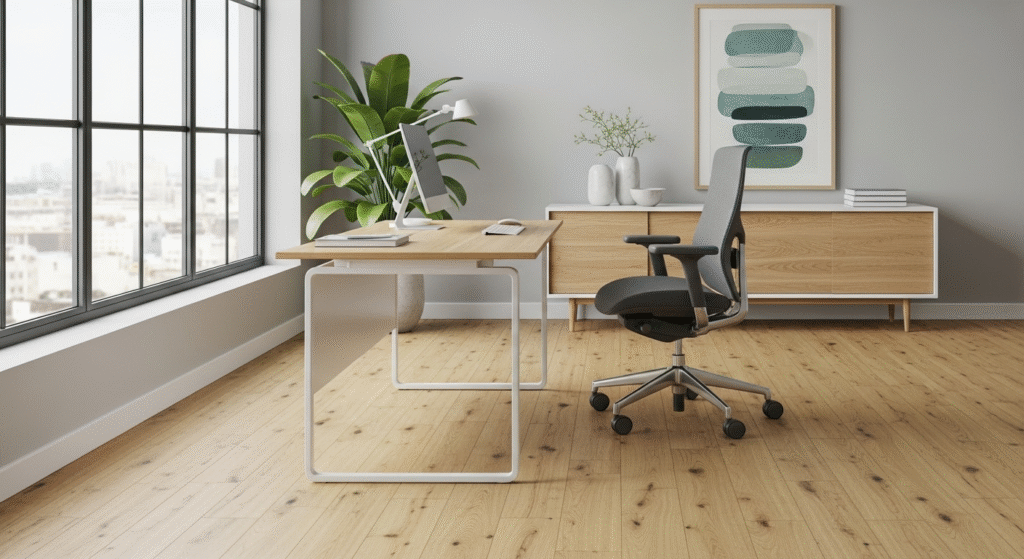
Manufacturers now produce safety flooring in:
- Vibrant Colour Palettes: From subtle pastels to bold, energetic hues, there’s a colour to match any design scheme.
- Realistic Textures and Patterns: You can find safety flooring that convincingly mimics natural wood, polished concrete, elegant stone, or even intricate textile patterns. These are achieved through advanced printing and embossing techniques.
- Customisable Designs: Many options allow for bespoke designs, including inlaid logos, demarcation lines for safety, or creative patterns to enhance wayfinding or brand identity within a commercial space.
- Sheen Levels: From matte to semi-gloss, the finish can significantly impact the overall look and feel of a space.
The key is that you no longer have to compromise on design to achieve safety. The goal is to choose a flooring solution that not only meets the performance requirements but also enhances the overall ambiance and user experience of the space.
What are the best safety flooring options for healthcare facilities or schools?
Choosing the ideal safety flooring for demanding environments like healthcare facilities or schools requires a meticulous comparison of various material properties. It’s about balancing extreme durability, hygiene, specific safety ratings, and increasingly, aesthetic flexibility. This is a prime example of why asking what factors should be considered when choosing the right safety flooring for a specific area is so crucial.
How do different material types compare for demanding environments?
Let’s compare some of the most popular safety flooring materials:
| Feature/Material | Vinyl Safety Flooring (Sheet/LVT) | Rubber Flooring | Epoxy/Resin Flooring |
|---|---|---|---|
| Primary Use | Healthcare, education, commercial kitchens, retail, residential wet areas | Gyms, schools, industrial, transport, healthcare | Industrial, manufacturing, commercial kitchens, laboratories, workshops |
| Slip Resistance | Excellent (R10-R12 standard), often with embedded aggregates for higher ratings (R13) | Very good (inherently non-slip), some options with raised profiles for enhanced grip | Good to excellent (can be modified with aggregates for specific R-ratings up to R13) |
| Durability | High wear resistance, good indentation recovery. | Extremely durable, resilient, excellent impact absorption. | Exceptional, very hard-wearing, resistant to abrasion and heavy loads. |
| Hygiene | Excellent (seamless sheets reduce bacterial traps), often anti-microbial treated. Easy to clean. | Very good, non-porous. Some textured options can be harder to clean. Anti-microbial options available. | Excellent (seamless, impervious to chemicals, easy to sanitise). |
| Aesthetics | Wide range of colours, patterns, and realistic natural finishes. Modern designs available. | Limited colour palette compared to vinyl, often a more industrial or sporty look. | Can be highly customised with colours, flakes, and decorative finishes, but often has an industrial feel. |
| Comfort | Moderate underfoot comfort, good for standing. | High underfoot comfort, excellent sound absorption, anti-fatigue properties. | Hardest underfoot, minimal acoustic absorption. |
| Chemical Resistance | Good to very good (depends on specific product and chemical). | Good. | Excellent against a wide range of chemicals, acids, and solvents. |
| Installation | Requires skilled installation, particularly for seamless sheets and intricate patterns. | Relatively straightforward, but large rolls can be heavy. | Requires expert installation, specific curing times, and preparation. |
| Maintenance | Easy to clean, requires routine sweeping/mopping. Polishing may be needed over time for some types. | Easy to clean, generally low maintenance. | Very low maintenance, easy to clean, highly resistant to staining. |
| Initial Cost | Moderate to high (depending on quality and features). | Moderate to high. | Moderate to high (can vary significantly with specific resin types and finishes). |
For healthcare and schools, vinyl safety flooring is often a top contender due to its excellent hygiene, wide aesthetic appeal, and good slip resistance, especially in sheet format for seamless installation. Rubber flooring also excels in comfort and durability for high-traffic areas and gyms within schools. Epoxy/resin is unbeatable for areas demanding the highest chemical resistance and extreme durability, like laboratories or industrial kitchens.
💬 Expert Insight:
“The true cost of flooring isn’t just the upfront purchase. It’s the cost of installation, the ongoing maintenance, and crucially, the cost of potential accidents. Investing in the right safety flooring mitigates these long-term risks, ensuring peace of mind and operational continuity.”
What practicalities should you consider regarding installation, maintenance, and cost?
Beyond the material specifications and aesthetic appeal, the practicalities surrounding safety flooring are crucial to its long-term success. These factors profoundly influence the true value and longevity of your investment, hence their importance when you’re deciding what factors should be considered when choosing the right safety flooring for a specific area.
What are the long-term cost and maintenance implications?
When evaluating the cost, look beyond the initial purchase price. Consider the Total Cost of Ownership (TCO), which includes:
- Purchase and Installation Costs: These are the immediate outlays. Higher-quality materials and complex installations will naturally command a higher initial investment.
- Maintenance Costs: How easy is it to clean? Does it require specialised cleaning agents or equipment? Does it need periodic waxing, polishing, or resealing? Low-maintenance options can save significant operational costs over time.
- Lifespan and Warranty: A flooring with a longer lifespan and comprehensive warranty offers better value, reducing the frequency of replacement.
- Energy Efficiency: Some flooring materials can contribute to better insulation, impacting heating or cooling costs.
What should you know about the installation process and timelines?
Safety flooring installation is often more intricate than standard flooring, requiring specialised skills and meticulous attention to detail.
- Subfloor Preparation: The subfloor must be perfectly level, clean, and dry. Any imperfections will telegraph through and compromise the longevity and performance of the safety flooring.
- Skilled Installers: Seamless installations, especially for sheet vinyl or complex resin systems, demand experienced professionals. Improper installation can lead to bubbling, lifting, or compromised slip resistance.
- Curing Times: Resin-based systems and some adhesives require specific curing times before the area can be trafficked, which must be factored into project timelines.
- Downtime: For commercial premises, understanding the installation timeline and potential downtime is critical for business continuity.
Navigating Your Flooring Journey: Choose Wisely, Choose Safely
Choosing the right safety flooring for a specific area is clearly a multi-faceted decision, requiring a holistic understanding of the environment, the materials, and the long-term implications. It’s a journey from initial concept to a fully operational, safe, and aesthetically pleasing space. By meticulously evaluating the 7 critical factors – traffic, moisture, hygiene, aesthetics, budget, maintenance, and installation – you ensure that the flooring not only meets compliance standards but truly enhances the safety, efficiency, and well-being of its occupants. Don’t leave safety to chance; make an informed choice.
Need help choosing the right safety flooring for your facility? Request a free site visit and recommendation today, and let our experts guide you to the perfect solution.
Frequently Asked Questions
Q: How do I know what slip resistance rating (R-rating) I need? A: The required R-rating depends heavily on the specific application area and expected contaminants. For instance, commercial kitchens typically require R11-R13, while general circulation areas might be R9 or R10. It’s crucial to consult with a flooring specialist or a health and safety officer who can assess your specific environment and recommend the appropriate rating based on relevant South African standards (e.g., SANS).
Q: Can safety flooring be repaired, or does it always need full replacement? A: This depends on the type of safety flooring and the extent of the damage. Minor scuffs or small punctures on vinyl safety flooring can often be patched or repaired. However, extensive damage, delamination, or compromised slip-resistant properties may necessitate replacement of sections or the entire floor to maintain safety standards. Regular maintenance helps prevent severe damage.
Q: Are there eco-friendly or sustainable safety flooring options available? A: Yes, many manufacturers are now producing safety flooring with sustainability in mind. Look for products made from recycled content, those that are recyclable at the end of their life, or options with low VOC (Volatile Organic Compound) emissions to ensure good indoor air quality. Certifications like GreenGuard or relevant ISO standards can indicate a product’s environmental performance.
